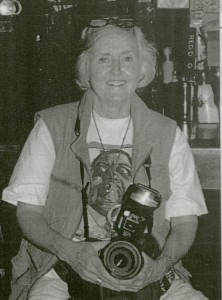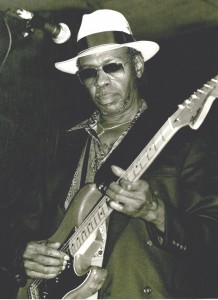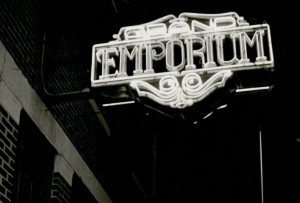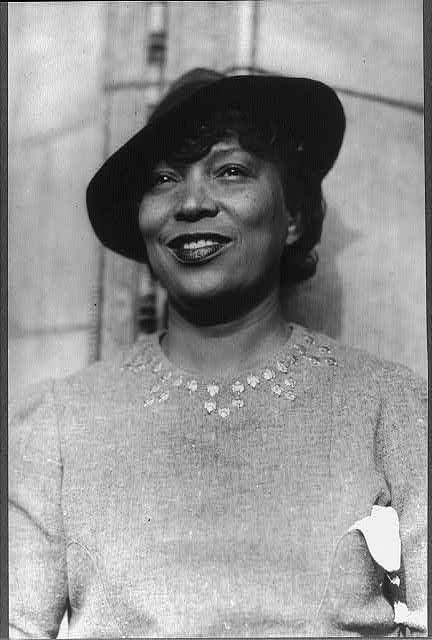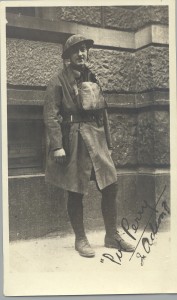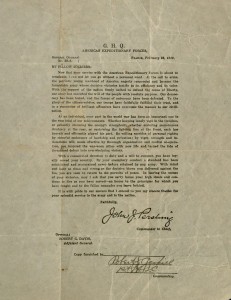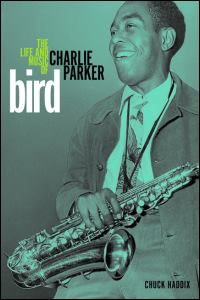One year ago, LaBudde Special Collections (LSC) and the Marr Sound Archives (MSA) made a valuable and historic addition to our collections through the remarkable generosity of Phyllis Kessel, widow of legendary guitar player Barney Kessel. Mrs. Kessel donated her late husband’s collection of nearly 400 audio/video items and hundreds of print documents. It turns out that one of hardest-working musicians to ever pick up a guitar was also a meticulous archivist. As a result, the Barney Kessel collection is a goldmine for music historians and fans alike. Through the efforts of LSC Graduate Student Assistant Anthony LaBat, MSA Public History Intern Taylor Bye, and the rest of the LaBudde and Marr team, we have finished processing the collection. This is the first of a series of posts taking a look at the breathtaking scope of Kessel’s career and offering a tiny taste of what the collection holds.
According to an official biography, “Barney Kessel was born in Muskogee, Oklahoma on October 17, 1923. He started playing guitar at the age of 12 and within a couple of years was playing in a local jazz orchestra. While he was still a teenager, Kessel met guitar legend Charlie Christian by chance in an Oklahoma City nightclub. Impressed by the youngster’s talent, Christian offered to pass his name on to renowned bandleader Benny Goodman. Christian’s guitar playing was a great influence on Kessel’s playing, which was essentially a further refinement of the older guitarist’s style. Kessel worked hard on his technique to create his own exciting, “straight-ahead” bebop jazz guitar, with no blues licks. Although he soon became well known locally as a talented guitarist, Kessel realized that there wasn’t a career for a jazz musician in Muskogee, and he moved to Los Angeles in 1942. Life wasn’t easy there and, at first, he had to make a living out of washing dishes at a restaurant, but he managed to get a break with the Chico Marx (of Marx Brothers fame) Orchestra in 1943, and this led to radio and studio work. A year later he appeared as the only white musician in an award-winning documentary film, Jammin’ The Blues. Word of Kessel’s abilities soon spread and during the remainder of the decade he also played with the bands of Artie Shaw, Charlie Barnet, and eventually Benny Goodman himself.”
By the 1960s, Kessel’s reputation was growing. In 1965, he made his first live record at P.J.’s Nightclub on Santa Monica Boulevard in West Hollywood, just a few blocks over from the Sunset Strip. 1965 was right as the Sunset Strip was entering its heyday as an epicenter of American Rock & Roll.
:format(jpeg):mode_rgb():quality(90)/discogs-images/R-3845054-1375225867-7212.jpeg.jpg)
Album Cover for On Fire (courtesy of Discogs)
Despite the burgeoning rock scene, clubs like PJ’s still catered to jazz audiences. PJ’s later became the Starwood Rock Club, before closing for good in 1981. Below are excerpts from a test pressing of his 1965 live show, which he released as the album “On Fire” on his own label (Emerald Records.)
Another singular item in the collection is what we believe to be an unreleased recording made for Reprise Records (part of Warner Brothers) in either the early or mid-1960s. The recording features Kessel playing alongside tenor sax whiz Zoot Sims. With Kessel and Sims were Monk Montgomery, Johnny Gray, and John Piscatelli on bass, 2nd guitar, and drums, respectively. According to a 1992 letter, Warner Brothers never released the album, though Kessel wanted them to release it as a CD. For copyright reasons, we can’t upload any of the material from that session. However, it is just one example of the unique items in the Kessel collection that researchers can use to uncover new stories about the history of American music.
Sources:
Barney Kessel Collection, MS295, LaBudde Special Collections, University of Missouri-Kansas City.
http://articles.latimes.com/1991-04-27/entertainment/ca-675_1_sunset-strip
https://en.wikipedia.org/wiki/Starwood_(nightclub)
http://martinostimemachine.blogspot.com/2016/12/pjs-night-club-las-first-discotheque.html

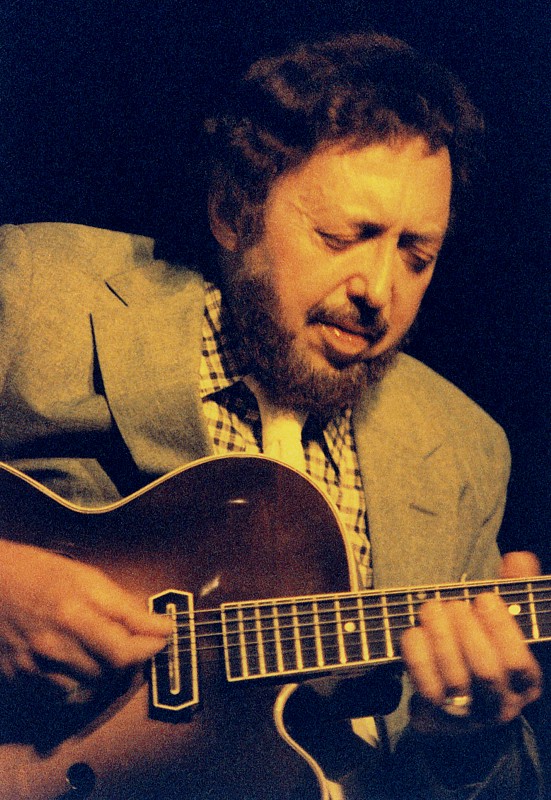
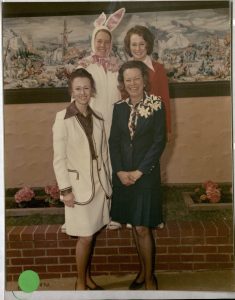
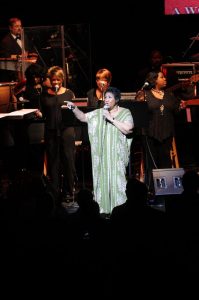
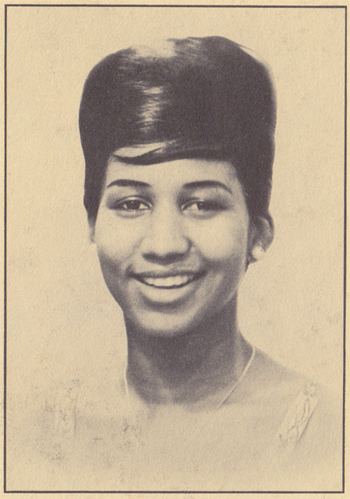
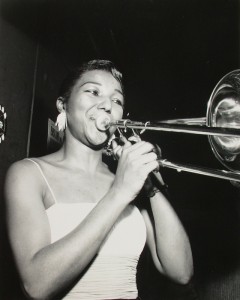
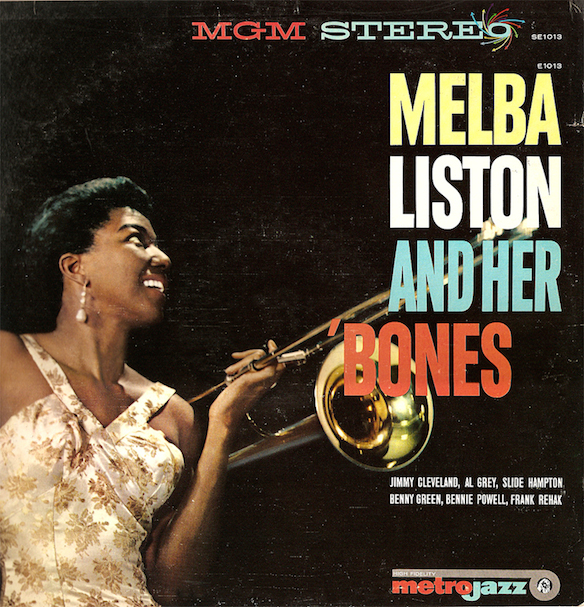
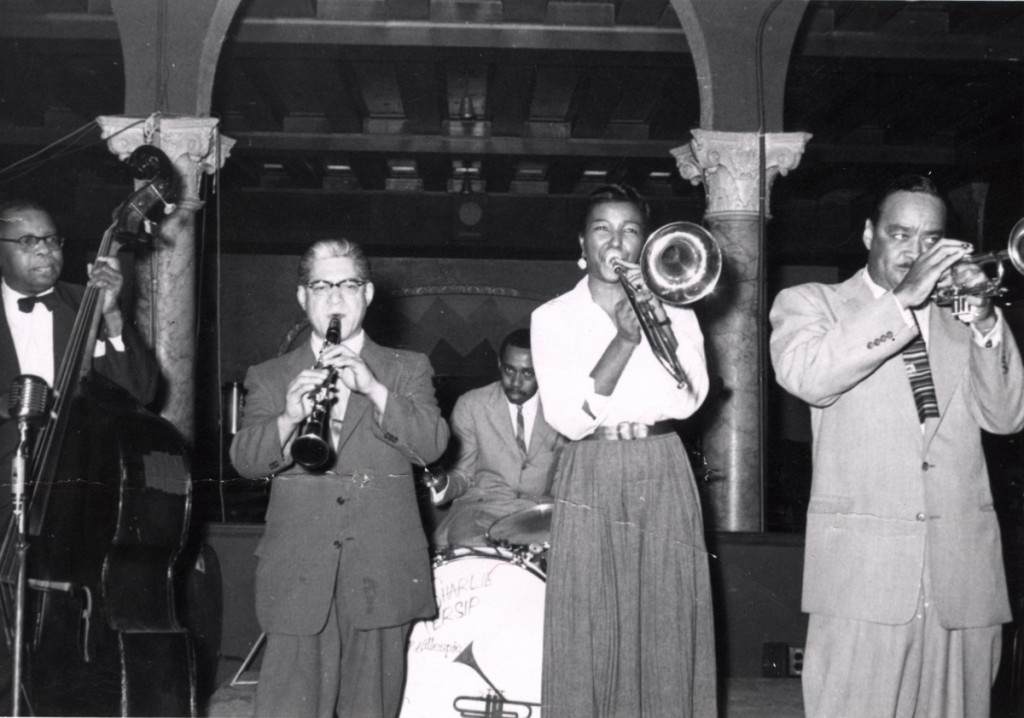
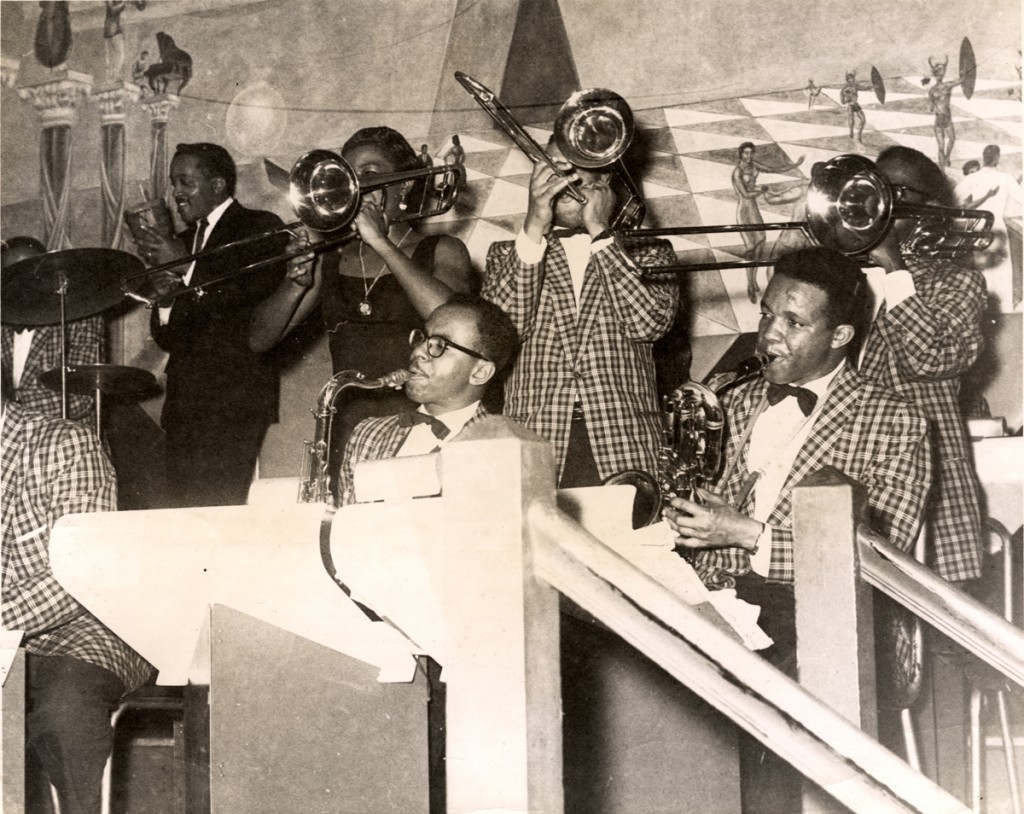
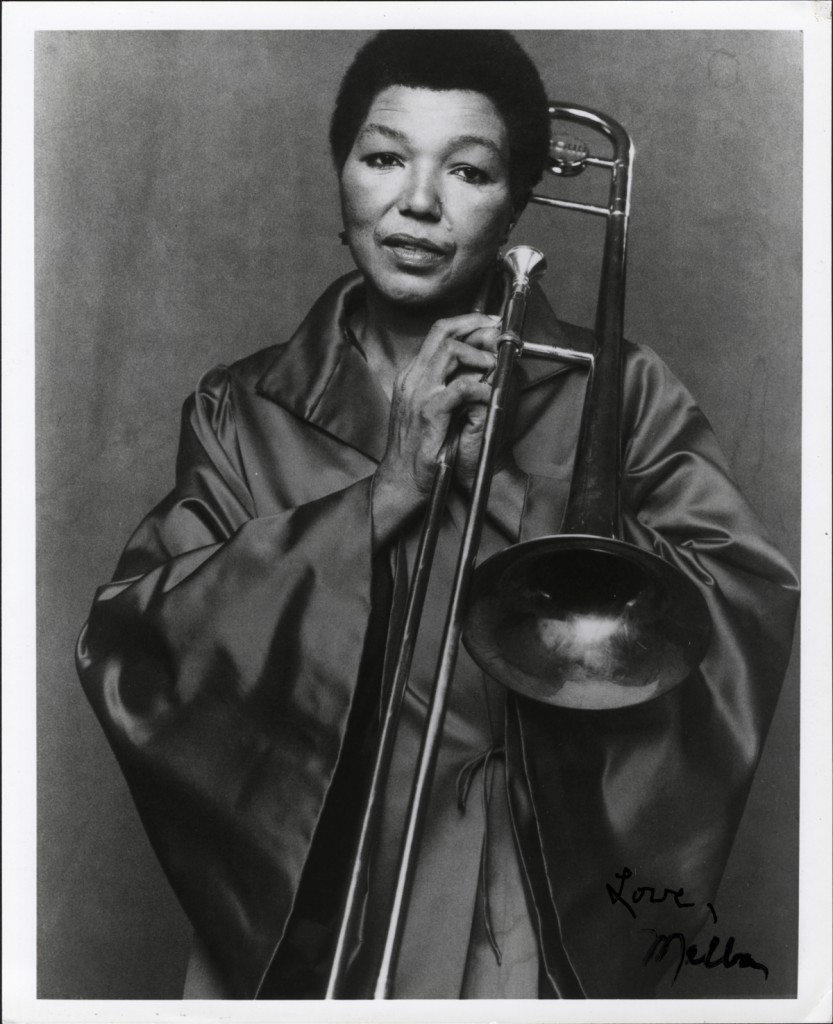
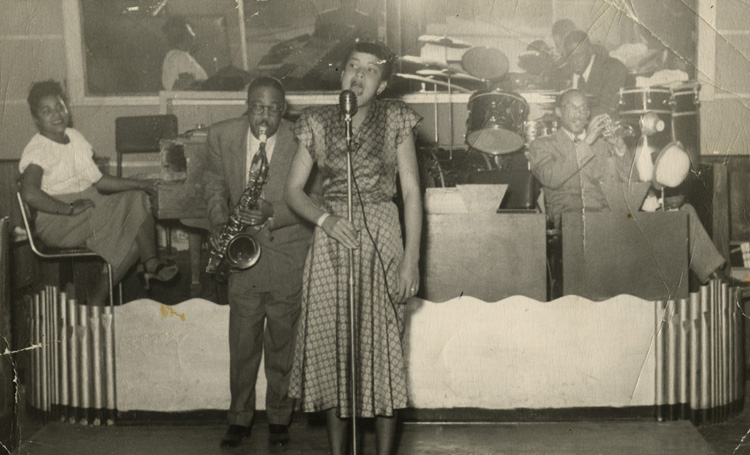
 David Basse is one of Kansas City’s best-known contemporary jazz artists. During his tenure broadcasting at Kansas Public Radio in Lawrence, he met Nan Hill, a devout listener and dynamo with unfettered knowledge of the Blues and Jazz Scene. She would come to write the radio host often. She composed her letters as she listened to Basse’s show on the radio and critique his programs as she felt she needed to. This Jazz Aficionada took her job as Mr. Basse’s appointed co-pilot quite seriously. Never could this radio host have imagined, while spreading inspiration with the power of music throughout the airwaves, that he in turn would be galvanized by the passion of this dear soul reaching back to him. Following is a moving tribute by David honoring Nan after her passing.
David Basse is one of Kansas City’s best-known contemporary jazz artists. During his tenure broadcasting at Kansas Public Radio in Lawrence, he met Nan Hill, a devout listener and dynamo with unfettered knowledge of the Blues and Jazz Scene. She would come to write the radio host often. She composed her letters as she listened to Basse’s show on the radio and critique his programs as she felt she needed to. This Jazz Aficionada took her job as Mr. Basse’s appointed co-pilot quite seriously. Never could this radio host have imagined, while spreading inspiration with the power of music throughout the airwaves, that he in turn would be galvanized by the passion of this dear soul reaching back to him. Following is a moving tribute by David honoring Nan after her passing. reference to the John Coltrane composition Mr. P.C. The song was written for Paul Chambers, Trane’s long-time bassist, and I realized last night how much Chambers is the star of that piece, driving everyone in the band to perform fabulous solos without being featured himself. That’s a jazz thing. That is exactly what Nan did each week with her solid devotion to me and my colleagues: she pushed the music along, influencing us without getting in the way. Nan fell by the station for a visit once when her granddaughter was in town from California. Nan was dressed like Norma Desmond, with black sunglasses and a brocade wrap around her head. I know she was training her granddaughter to listen to jazz by insisting on the outing. The two of them sat quietly in the studio and watched me program the entire afternoon. From then on, the weekly letters not only included stories from Nan’s active memory and tales of her daily activities, Nan also kept me apprised of the goings on of her beloved granddaughter. It was the hippest. After several years of letters, I decided to call her. I invited her to attend a few jazz shows, the very special ones I offered to drive to Lawrence to pick her up and return her when she was too tired to hang. Once, she actually took me up on the offer, for a holiday jazz event that KPR sponsored at Liberty Hall. Nan reserved a room across the street at the Eldridge Hotel to be close to a bed if she needed to lie down. We talked and wrote back and forth several times while making plans. When the big day came, a serious blizzard hit Lawrence right at the end of my 4pm shift. Nan couldn’t make the scene. She had to hear the gig on the radio, listening and commenting on every nuance of the party – both times it aired!
reference to the John Coltrane composition Mr. P.C. The song was written for Paul Chambers, Trane’s long-time bassist, and I realized last night how much Chambers is the star of that piece, driving everyone in the band to perform fabulous solos without being featured himself. That’s a jazz thing. That is exactly what Nan did each week with her solid devotion to me and my colleagues: she pushed the music along, influencing us without getting in the way. Nan fell by the station for a visit once when her granddaughter was in town from California. Nan was dressed like Norma Desmond, with black sunglasses and a brocade wrap around her head. I know she was training her granddaughter to listen to jazz by insisting on the outing. The two of them sat quietly in the studio and watched me program the entire afternoon. From then on, the weekly letters not only included stories from Nan’s active memory and tales of her daily activities, Nan also kept me apprised of the goings on of her beloved granddaughter. It was the hippest. After several years of letters, I decided to call her. I invited her to attend a few jazz shows, the very special ones I offered to drive to Lawrence to pick her up and return her when she was too tired to hang. Once, she actually took me up on the offer, for a holiday jazz event that KPR sponsored at Liberty Hall. Nan reserved a room across the street at the Eldridge Hotel to be close to a bed if she needed to lie down. We talked and wrote back and forth several times while making plans. When the big day came, a serious blizzard hit Lawrence right at the end of my 4pm shift. Nan couldn’t make the scene. She had to hear the gig on the radio, listening and commenting on every nuance of the party – both times it aired!